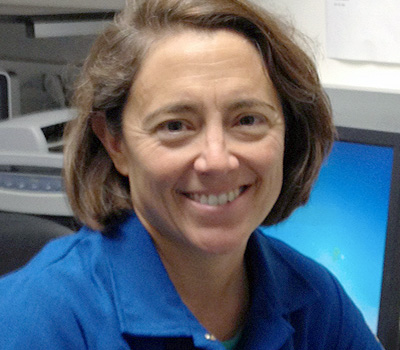Taking a ground-breaking approach to uncovering cures for brain diseases
Scientists have a good understanding of how most of the human body systems work but the brain is still very much of a "black box." It's used every second, yet scientists know just a tiny fraction of how it works. The brain truly represents the final frontier in academic research.
Dr. Elva Diaz of the University of California, Davis studies highly conserved genes not previously implicated in brain development and genes encoding hypothetical proteins of unknown function with state-of-the-art expression profiling approaches. She posits that such "functional comparative genomic" approaches are particularly well suited for the discovery of novel molecules involved in key aspects of brain development. However, few, if any, investigators actually pursue the characterization of these hypothetical molecules identified in such screens, because, being unannotated, nothing is known about them. Ironically, this type of study represents a huge untapped potential-a large fraction of the genes in our genome are unannotated and scientists have no idea what these molecules do. In many cases these molecules contribute to diseases and by studying these novel molecules, Dr. Diaz uncovers a better knowledge of how they affect the brain.
Dr. Diaz has cultivated multidisciplinary collaborations with biomedical engineers, cancer biologists, chemists, electrophysiologists, pediatricians, structural and computer modelers, and proteomic researchers to tackle problems that are not generally considered by the brain development field. This interdisciplinary approach yields valuable information that is not otherwise possible to obtain through traditional techniques.
-
Dr. Diaz initially applied a functional genomic approach to discovering new molecules involved in brain development by using the mouse cerebellum and retina as model systems. Initially she took on the task of building her own PCR-based mouse cDNA microarray to identify developmentally regulated genes in the mouse cerebellum and retina. At that time DNA microarray technology was in its infancy and use of the technology required the ability to build her own microarrays because the cost of purchasing commercial microarrays was prohibitive. Using these custom built DNA microarrays, she has identified many genes differentially expressed during cerebellum and retina development. Not surprisingly, some of the genes that she identified were already known to be involved in brain development. However, as an independent investigator, she decided to study genes not previously implicated in neural development or genes encoding hypothetical proteins of unknown function.
-
Dr. Diaz's team has demonstrated that one of her newly discovered genes expressed in the brain that encoded the transcription factor Mxd3 is a critical regulator of neural proliferation and its mis-regulation is involved in pediatric tumors such as medulloblastoma. Their basic scientist discovery on the role of Mxd3 is being translated into the clinic through collaboration with physician-scientists in the pediatrics department to ultimately find cures for the tumors.
-
In addition, another focus of Dr. Diaz's lab is the characterization of novel family of transmembrane proteins (SynDIGs) that regulate synapse development. Excitingly, SynDIG1 was recently identified in a genome wide association study as implicated in schizophrenia.
Unfortunately, the current economic climate is not amenable for Dr. Diaz's groundbreaking research program. She has submitted many traditional R01 grant applications to the NIH over the past several years, and while the reviewers of her grant proposals are always impressed with her training and abundant preliminary data, a major and constant criticism is that the experiments proposed are "extremely risky." Why risky? Dr. Diaz is considered as being "too new" to a field dominated by well-established hierarchies and she feels that being a Hispanic, female researcher makes her an outsider. It is likely that if the novel molecules she identified were discovered by an established lab the research would be funded. However, established labs don't take the risks of studying novel molecules, and it's up to independent researchers such as herself to employ risk-taking, unique approaches!
Bio
Dr. Diaz is a pioneer in her field driven by the quest for discovery and new knowledge. She's challenged by the unknown and driven by the desire to make discoveries that will lead to the identification of new molecules involved in various biological phenomena. She is inspired by the diversity of her training, which spans many fields including biochemistry, molecular cell biology, genetics, genomics, and bioinformatics, to investigate biological phenomena from a multidisciplinary perspective reflected by the major achievements of her career.
Dr. Diaz's focus on mentoring and training of undergraduate and graduate students is just as important to her as her research. She is committed to train future generations of research scientists to pursue innovative research programs. In particular, as a member of an underrepresented group (Mexican-American), she enjoys serving as an important role model and mentor for students from underrepresented backgrounds who wish to pursue an innovative research career.
In the News
UC Davis Magazine


